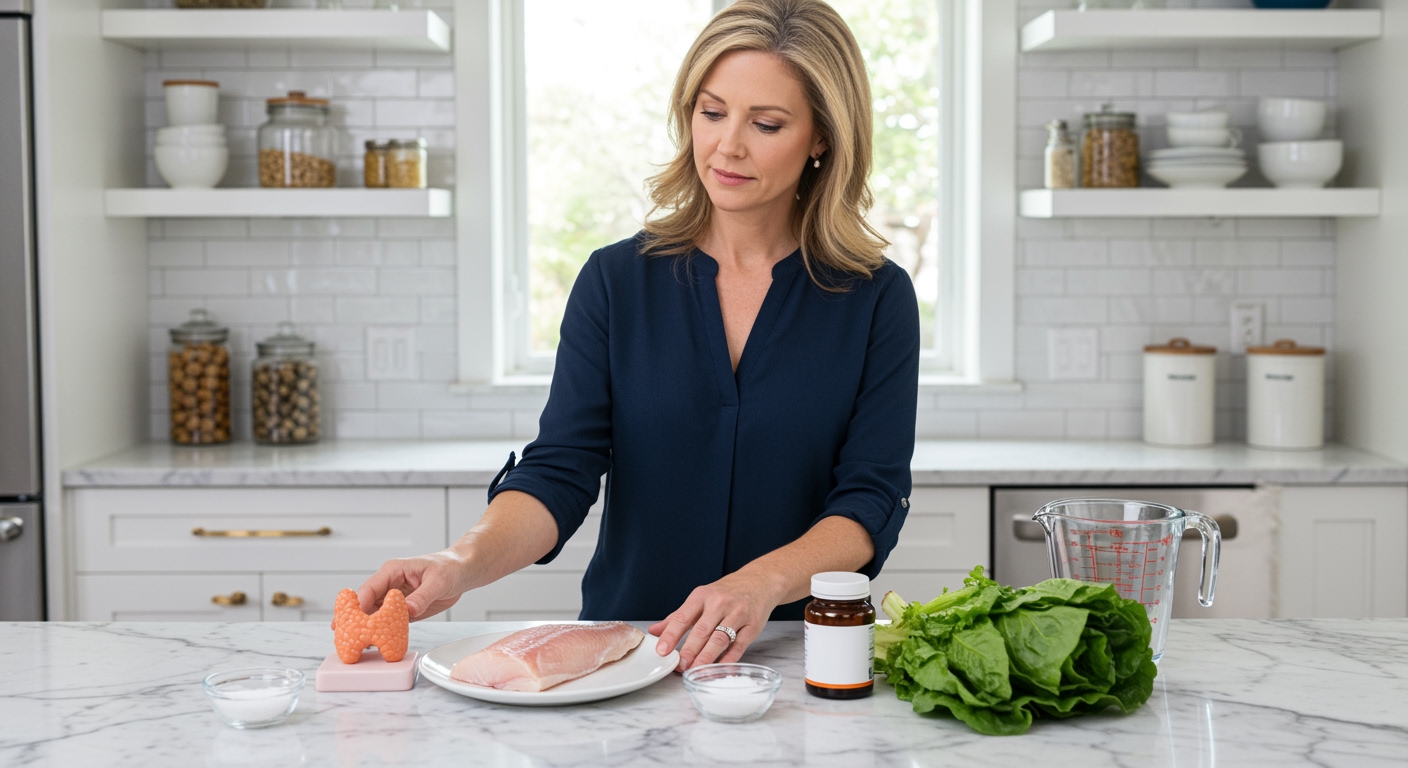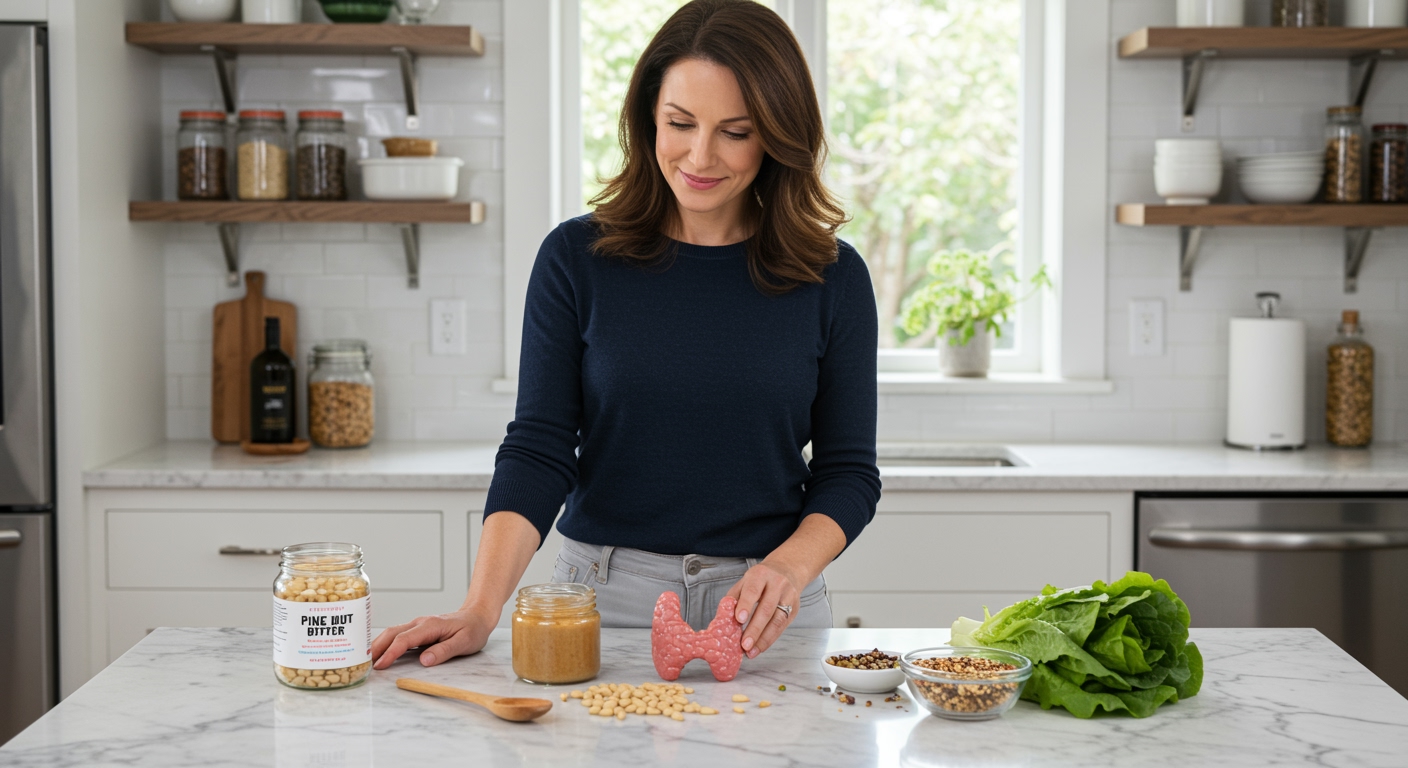✪ Key Takeaway: Hubbard squash supports thyroid health through vitamin A and selenium but cannot treat hypothyroidism alone.
Introduction
You walk through the farmers market and spot a massive, bumpy squash that looks like it came from another planet.
You might be wondering if this unusual vegetable called Hubbard squash could help manage your underactive thyroid condition.
Hi, I am Abdur, your nutrition coach and today I am going to explain how Hubbard squash affects thyroid function and whether it deserves a place in your hypothyroidism management plan.
What Makes Hubbard Squash Different From Other Winter Squashes?
Hubbard squash belongs to the winter squash family but stands out with its thick, bumpy, hard shell that can be blue, gray, or orange.
This vegetable can weigh anywhere from 10 to 40 pounds, making it one of the largest squash varieties you will find.
The flesh inside is bright orange, dense, and slightly sweet when cooked properly.
Unlike butternut or acorn squash, Hubbard squash has a drier texture that works well for roasting and pureeing.
The tough outer shell protects the flesh inside, allowing it to store for months in cool, dry conditions.
This extended shelf life made Hubbard squash a survival food for many communities throughout history.
✪ Fact: Hubbard squash can store for up to six months without refrigeration when kept in proper conditions.
What Nutrients Does Hubbard Squash Provide For Thyroid Health?
Hubbard squash delivers high amounts of vitamin A in the form of beta-carotene, which your body converts as needed.
One cup of cooked Hubbard squash provides approximately 8,600 IU of vitamin A, which is more than your daily requirement.
Vitamin A supports the conversion of T4 to T3, the active form of thyroid hormone your cells actually use.
This vegetable also contains small amounts of selenium, a mineral essential for thyroid hormone production and metabolism.
The fiber content in Hubbard squash helps regulate blood sugar, which indirectly supports thyroid function by reducing metabolic stress.
You also get potassium and magnesium from this squash, minerals that support overall cellular function and energy production.
The antioxidants in Hubbard squash help reduce inflammation, which is important since many thyroid conditions involve inflammatory processes.
✪ Pro Tip: Pair Hubbard squash with a fat source like olive oil to enhance vitamin A absorption since it is a fat-soluble nutrient.
Does Hubbard Squash Contain Goitrogens That Harm Thyroid Function?
Goitrogens are compounds that can interfere with thyroid hormone production by blocking iodine uptake in the thyroid gland.
The good news is that Hubbard squash contains minimal goitrogenic compounds compared to cruciferous vegetables like broccoli or cabbage.
Most winter squashes, including Hubbard, are considered thyroid-friendly vegetables that you can eat freely without concern.
Even vegetables with goitrogens become much less problematic when cooked, as heat deactivates many of these compounds.
For people with hypothyroidism who take thyroid medication and maintain adequate iodine intake, dietary goitrogens rarely cause issues.
The real concern with goitrogens applies mainly to people with severe iodine deficiency, which is uncommon in most developed countries.
✪ Note: If you take thyroid medication, maintain consistent vegetable intake rather than making drastic dietary changes that could affect your dose requirements.
Can Hubbard Squash Replace Thyroid Medication Or Treatment?
No food, including Hubbard squash, can replace prescribed thyroid medication for managing hypothyroidism.
Hypothyroidism is a medical condition where your thyroid gland cannot produce enough hormones on its own.
Thyroid medication provides the synthetic or natural hormones your body needs to function properly.
While Hubbard squash supports overall nutrition and provides nutrients that help thyroid function, it cannot produce thyroid hormones.
Think of nutrition as the supporting actor and medication as the lead actor in your hypothyroidism management plan.
Good nutrition helps your body use thyroid hormones efficiently, but it cannot create them when your gland is underactive.
Always work with your healthcare provider and never stop or reduce medication based on dietary changes alone.
✪ Pro Tip: Schedule regular thyroid function tests to monitor your levels rather than relying on how you feel or what you eat.
How Should You Include Hubbard Squash In A Hypothyroidism Diet?
Start by cutting the tough shell with a heavy knife or asking your grocery store to cut it for you.
Remove the seeds and stringy pulp, then cut the flesh into manageable chunks for roasting or steaming.
Roasting Hubbard squash at 400 degrees Fahrenheit for 30 to 40 minutes brings out its natural sweetness and creates a tender texture.
You can puree cooked Hubbard squash for soups, add it to stews, or mash it as a side dish similar to sweet potatoes.
Aim to include one to two servings of Hubbard squash per week as part of a varied vegetable intake.
Combine it with protein sources like chicken, fish, or legumes and healthy fats to create balanced meals.
Remember that variety matters more than focusing on any single superfood, so rotate Hubbard squash with other colorful vegetables.
✪ Fact: The seeds from Hubbard squash can be roasted and eaten just like pumpkin seeds for additional nutrients and healthy fats.
The Bottom Line
Hubbard squash is a nutrient-dense vegetable that supports thyroid health through vitamin A, selenium, and anti-inflammatory compounds, but it cannot treat hypothyroidism on its own.
Good nutrition builds the foundation, but medication provides the structure for managing hypothyroidism effectively.
I would love to hear your experience with including winter squashes in your diet, so please share your thoughts, questions, or favorite recipes in the comment section below.
References
At NutritionCrown, we use quality and credible sources to ensure our content is accurate and trustworthy. Below are the sources referenced in writing this article:
- Healthline: Hypothyroidism Diet
- SingleCare: Hypothyroidism Diet
- Cleveland Clinic: Benefits of Squash
- Thyroid Pharmacist: Best Diet for Hashimotos Hypothyroidism





